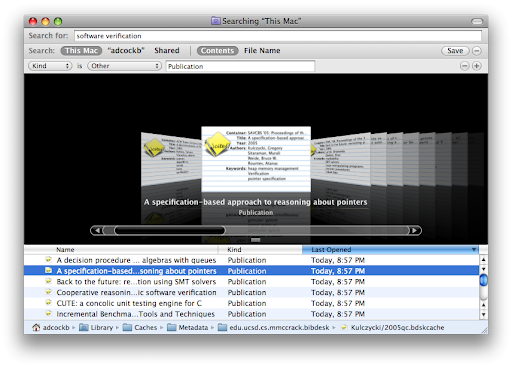


The quantity of citations can be quite large. Export functions to the various citation managers (e.g., RefWorks, Zotero, Mendeley, EndNote) are not always sufficient to the task.
#IMPORTING A BIBDESK SOFTWARE#
While some citation management software such as EndNote 6 offers an export to tab-delimited format, this is not always a routine process. Any data mismatch or nonstandard formatting in the input can throw off the export. For example, Evidence Partners offers their DistillerSR and DistillerSER line of products that support systematic reviews.Įxport options will differ for each reference manager, and not all supported users will have the same versions.Ī number of solutions are available. On the academic side, the University of Texas has a LibGuide with a set of preconfigured Excel workbooks for working with these citations. While these tools are quite robust, they require an investment in funds or time to learn and then to customize reference managers to produce the appropriate output. Is there a method to reliably convert citation data that does not rely on a specific version of a citation manager and does not need any third-party software or scripting that requires additional training or tools? Depending on the environment, there may not be funds or development resources available to take advantage of these options. #Cant see import options on bibdesk software This brief overview outlines a method to convert citation data to a form that is easily manipulated. This method relies only on a standard output and functions that are in any spreadsheet application, thus it is easily done by any librarian, researcher, or administrative staff. The key to this method is to transfer citation data from the citation manager as a defined citation format (e.g., Modern Language Association style), rather than a defined file format (e.g., RIS or BibTex), and to use that definition to create the spreadsheet file. Using a test file of 770 citations, this method took less than 5 minutes to convert data from EndNote to a workable Excel file. To convert data from the citation manager to a spreadsheet file, you need delimiters to separate textual elements. In the MLA style for a journal citation, this delimiter can be found in the separation between the author/title and title/source, as quotes :Īuthor(s). “Title of Article.” Title of Periodical Day Month Year: pages. Note that depending on the source file format, the text may have “smart” quotes (i.e., opening and closing quotes instead of straight quotes). These will have to be replaced for Excel to delimit properly. To import a dataset into a spreadsheet, export it from the citation manager to a bibliography file in MLA style. Open that file in Excel, and choose “delimited text” and the quotation character as the delimiter. Figures 1 and and2 2 show these two steps. An example of citations in Zotero shown in Figure 3 would appear in Excel as shown in Figure 4. The spreadsheet can then be set up to include the coding scheme appropriate to the review process (i.e., standards such as PRISMA or MECIR). For example, flags for records excluded, and reasons or rankings for strength of evidence can be added as spreadsheet columns.Īdditional separation of data is also possible. Citations from PubMed have parentheses around the year data. You can use these as delimiters to separate out year data into a separate column. This will make it easy to analyze the average age of the citations or to group them into historical clusters.

This export method is not completely foolproof. If citations have additional quotes embedded in the title, they will have to be manually adjusted. However, these are a small minority in any output set and can be found by sorting on the journal citation data column. Any that were not imported cleanly will be immediately visible.īased on feedback the author has received about this method, additional data are preferred in the output, particularly the PubMed ID (PMID). Direct output from PubMed will already have the PMID appended to the end of the citation, from which a uniform resource locator (URL) can be created to allow for one-click access to the abstract (e.g., =HYPERLINK(" For citations already in a reference manager, this can be accomplished by adjusting the output style of the bibliograpy. Michigan State University has outlined this process in Zotero, and other reference managers should have similar capabilities. #Cant see import options on bibdesk software.


 0 kommentar(er)
0 kommentar(er)
